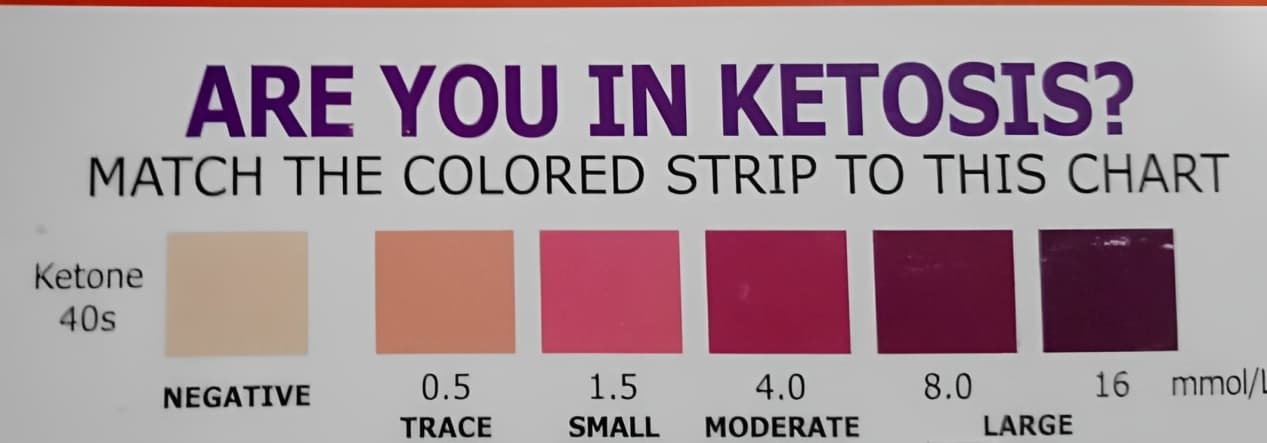Summary :
Ketones are an alternative source of energy in case of carbohydrate (sugar) deficiency. This article explains the signs and symptoms of ketone bodies in urine, how to measure them, and what the results may indicate.
◉ Introduction
Normally, the body burns sugar (glucose) to produce energy. But if you don't have enough sugar in your body to produce energy, your body burns fat.
The liver converts this fat into ketones, a type of acid, and pumps them into the bloodstream where the muscles, brain and other tissues can then use them as fuel.
ketone bodies in the urine are often seen in people with type 1 diabetes, which is characterized by the body's inability to produce enough insulin, a hormone necessary for the use of glucose as an energy source.
The presence of ketones in the urine can be assessed using simple and quick urine tests.
Having a trace of ketones in your urine is normal. However, a high level can warn you of a serious complication of diabetes called diabetic ketoacidosis.

Measurement of ketones by reactive strip
◉ What is ketones?
Ketone is a byproduct of fat breakdown. It forms when there is insufficient glucose to fuel the cells and the body must burn fat instead. It is produced by the process of ketogenesis in the liver and can be used as an energy source by the brain when glucose is limited.
High ketonemia (blood ketone levels) is toxic to the body and could make our blood too acidic (ketoacidosis). In this case, our kidneys try to eliminate them from the body through our urine (ketonuria).Ketone bodies include: acetoacetate, acetone and beta-hydroxybutyrate.
◉ Normal value of ketones in the urine
The normal values of ketones in the urine may vary slightly depending on the laboratories and the measurement methods used. However, in general, normal urine ketone levels are considered to be below 0.5 mmol/L (<5 mg/L).
◉ Causes
The presence of ketones in urine can mean very different things to people with different conditions.
- Uncontrolled Type 1 Diabetes: Without insulin, glucose cannot enter cells for use As a result, the body begins to use fat as an alternative source of energy, resulting in the formation of ketone bodies.
- Uncontrolled type 2 diabetes (less common).
- Fasting, starvation, or waiting too long between meals.
- Excessive vomiting or diarrhea
- Dehydration
- High Fat or Low Carb Diet (Ketogenic Diet)
- Extreme workouts or overexercise.
- Alcohol Use Disorder
- Certain drugs used to treat high blood pressure.
- Pregnancy and lactation
- Underlying disease: heart attack, pancreatitis or sepsis
◉ When should I dose ketones?
You, or your doctor, may consider testing for ketones in your urine in the following situations:
- Your blood sugar is above 300 mg/dl.
- You urinate more frequently than usual.
- You have excessive thirst or dry mouth.
- You have sudden weight loss.
- You have nausea, abdominal pain, or vomiting.
- You abuse alcohol
- You are pregnant
- You feel more tired than usual.
- You are confused
◉ How to detect ketone in urine?
The test for ketones in urine is often done to help monitor people who are more likely to develop high levels of ketones.
◉ Procédure
To detect the presence of ketone bodies in the urine, you can use specific test strips designed to measure ketones.
- Read the manufacturer's specific instructions carefully.
- Wash your hands thoroughly and then your genital area with soap and water.
- Start urinating into the toilet, then stop and place the sterile collection container under your urine stream.
- Collect at least 30 milliliters of urine in the container, then finish urinating in the toilet.
- Remove a strip from its wrapper.
- Soak the strip in the urine sample for the recommended time (usually a few seconds).
- Remove the test strip from the urine and tap it gently to remove excess urine.
- Wait the recommended time (usually 45 seconds) for test results to develop.
It is important to carefully follow the instructions that come with the specific test strips you are using, as procedures may vary slightly by brand and model.
◉ Results
The ketonuria test is read by comparing the color of the test strip to a color chart provided by the manufacturer. The color of the test strip will change depending on the level of ketones in the urine sample.
- No ketone bodies
- Trace of ketones: 5 mg/L (0.5 mmol/L)
- Low ketone levels: 15-20 mg/dL (1.5 - 2 mmol/L)
- Moderate ketone levels: 30 and 40 mg/dL (3 - 4 mmol/L)
- High amounts of ketones: 80 - 160 mg/dL (8 - 16 mmol/L)

Urine ketone test
Note: You should consult your doctor if your urine ketone test shows abnormal values, especially if you have diabetes
◉ Ketone bodies in urine during pregnancy
During pregnancy, especially in the third trimester, the production of ketones is increased. This occurs due to increased maternal insulin resistance and increasing energy requirements of the fetus, which consequently leads to increased maternal lipolysis.
The presence of ketone bodies in urine during pregnancy can be of concern and requires appropriate medical attention.
◉ Treatment
The treatment for the presence of ketones in the urine depends on the underlying cause of this anomaly (adjust your dose of insulin, Rehydration, Diet control, etc.). It is important to consult your doctor to assess the situation and determine the appropriate treatment plan.